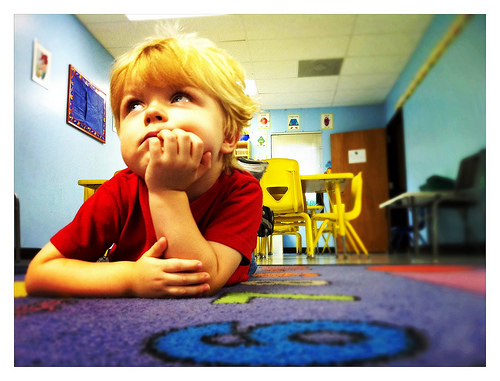
The Pinnacle of Israeli Education
This year our son was one of six toddlers in a Mishpachton run by a young French-Israeli woman named Rina, herself a mother of two elementary school age children. We dropped him off every morning at 8am and picked him up by 4pm. My husband and I could not have been happier with the warm and devoted care our son received. The Mishpachton was homey and simple, but it was a safe and secure environment in which Matan was stimulated and encouraged to learn and grow, and my husband and I joke that it will be the pinnacle of our children’s education in Israel. Rina cooked all of the kids’ food in her kitchen, made art projects out of cereal boxes and egg cartons, and taught them about the Jewish holidays over the course of the year. It was not a specifically religious Mishpachton, but like most early childhood programs for Israeli children, it was Jewish because that is the national culture. We were thrilled when every day during the first two weeks of Adar, Matan came home in a different Purim costume, all made from recycled materials that Rina had saved.
Unlike the exorbitant childcare programs that Birkner reports on, the monthly cost was less than a third of my monthly salary, which, even with two other kids, was manageable in our two-income household. The Mishpachton system is not regulated by the government, though most of the caregivers obtain insurance on a per-child basis. There is also no official list of all the Mishpachtonim in any given area; from my experience, the only way to find out about a Mishpachton is by word of mouth, which makes it particularly difficult for immigrants without a wide social network.
Still, I read Birkner’s article and realized just how lucky we are to benefit from available and affordable daycare that has allowed my husband and me to continue working even with three young children.
Perhaps out of Zion shall go forth daycare.
photo credit: Jason L. Parks via photopin cc



